Feeding Kelp to Your Homestead Animals
Feeding kelp to your livestock is a great way to keep your herd’s immune system strong so they can handle the changing weather, parasites, and more. If you are looking for natural ways to boost your herd’s health, then this tip is one I want to encourage you to try.
How to raise dairy goats that are healthy without having to call on vets or medicines to do so. See how kelp can support and encourage health with your animals.
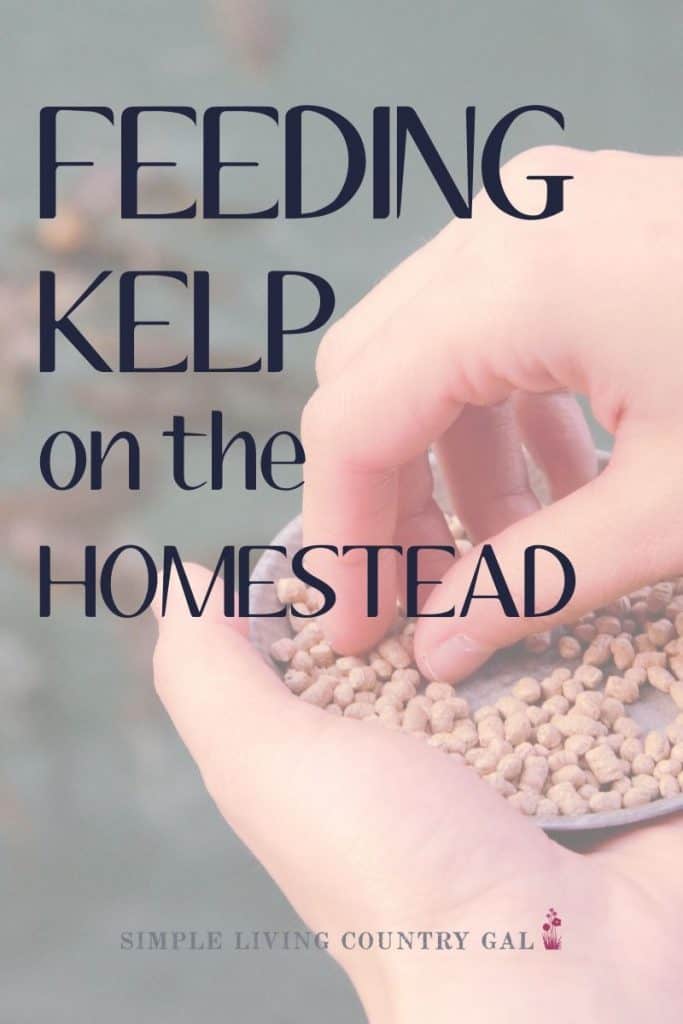
When I first heard someone say they were feeding kelp to their animals, I thought they were kidding.
Kelp? What is it? That’s like seaweed, right? Why on earth would I feed it to my animals, and would they even eat it, especially my goats, who are pretty picky?
As with anything new, I began researching what exactly kelp was and if it would benefit any of my animals.
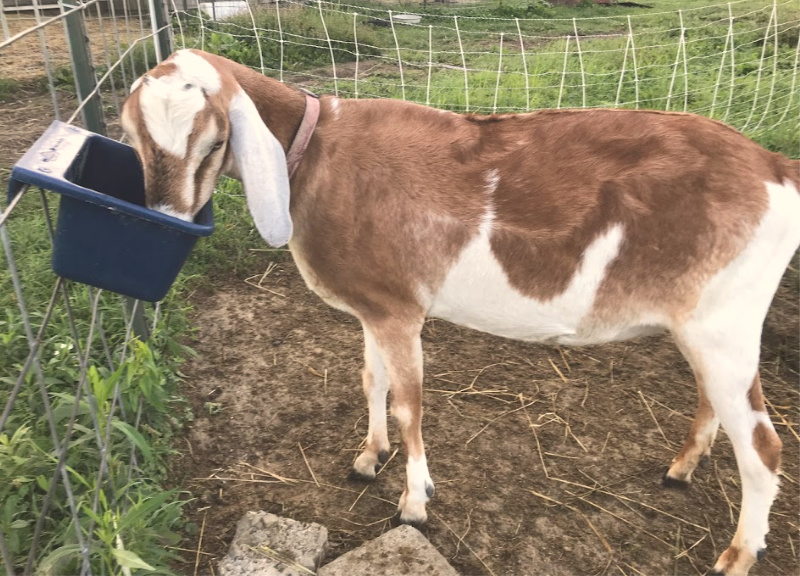
What is kelp?
From my research online I found out that Kelp is a large, brown seaweed that typically grows in shallow saltwater.
It is full of nutrients that can benefit not only our health but also the health of our livestock and pets, including dogs and cats. It is said to help prevent disease and boost immune systems with its good-for-you nutrients.
I always like to go a step further before trying anything new to ensure I am doing what is best for our livestock. I asked local goat people and a few of my chicken friends what they thought of using kelp.
What I found was about half and half as to the knowledge and use of kelp. It may be no surprise to know that my more organic homesteading friends were aware of kelp and were already using it with all of their animals.
Disclaimer: In accordance with FDA guidelines, the information and products offered or suggested on this website are not intended to diagnose, treat, cure, or prevent any disease. Please make sure your veterinarian is aware of any vitamins or minerals you are giving your animals.
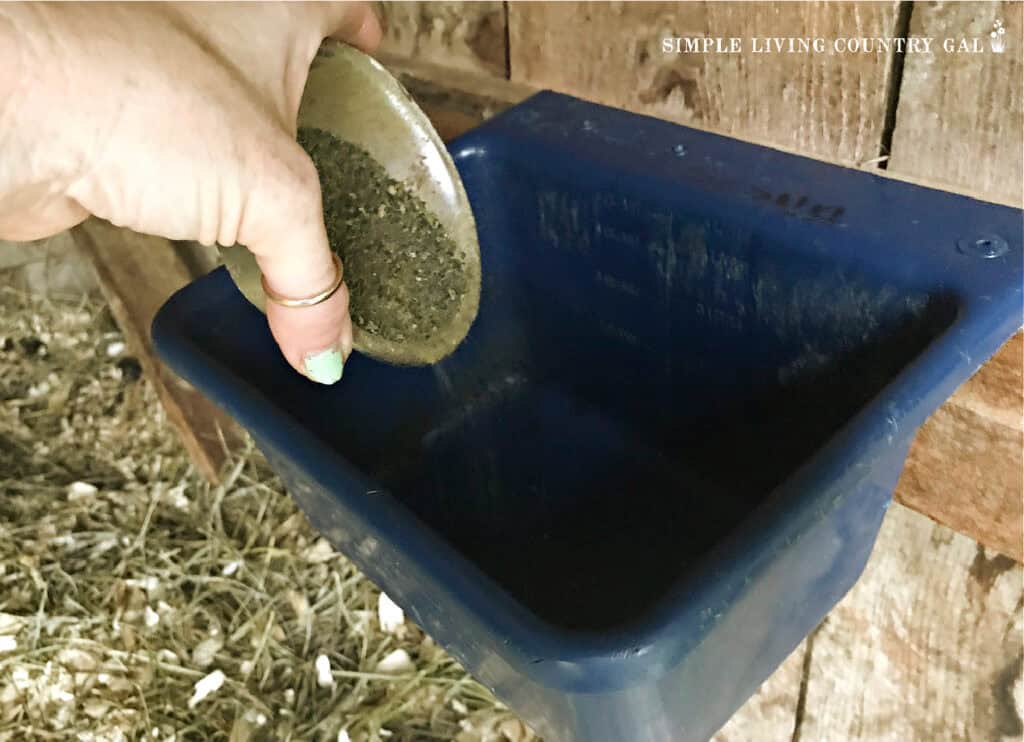
Where can you find kelp for your livestock?
My next step was to find where I could purchase kelp for our livestock. Luckily, I was able to find Thorvin Organic Kelp at my local feed store although you can find it online at several reputable sites as well.
Why is thorvin Kelp good?
Food grade Thorvin Kelp is a rich source of iodine, nutrients, amino acids, and vitamins. It is produced under low-temperature drying ensuring the proper moisture levels for vitamin and amino acid stability.
Yes, there are other brands of kelp, but we have found Thorvin to be a good choice. It is important to know that kelp is not cheap, but as with anything, you need to decide what is worth the cost.
Thorvin Nature’s Icelandic Kelp Meal for Animals | 40 lbs

Why is kelp a good addition to your feeding regimin?
Adding Kelp to your feeding regime will boost your animals’ immune systems, which will, in turn, prevent frequent health issues from popping up again.
For me, preventing disease and health issues of any kind is an investment rather than an expense. Check your homestead budget to be sure you can justify and handle the added cost before diving in.
How to feed Kelp to your goats
This information is from Thorvin’s website and the brand of kelp that I feed to my animals.
“Cattle, sheep, and goats tend to self-regulate free-choice consumption of Thorvin to levels consistent with recommended rates.
In some cases, animals will consume larger than normal quantities, but this binge typically only lasts 30-60 days, depending on the animal’s mineral status.
If higher consumption continues beyond 60 days, mix Thorvin with salt, one-to-one, to reduce intake, and consult your nutritionist.
Dairy Goat Milking Guide+Bundle

When feeding Thorvin free-choice, provide one covered mineral feeder for every 25-30 cows and every 40-50 sheep or goats. Also, make sure animals have access to salt and clean water.“
Since kelp is a mineral, I prefer to feed it free choice. I fill my goat’s mineral feeders daily at about 1/2 cup per goat.
What does Free Choice mean?
For my newer animal owners, free-choice simply means that…..free choice. You leave the kelp out and let your goats decide if and when they eat it.
Common things to offer free choice are:
- Salts
- Minerals
- Baking soda
- Kelp
Your animals will instinctively know if they are lacking and need the additive or not. It is really quite amazing when you think about it.
Our goats love the kelp so much that it is usually finished by the end of the day. If I do find kelp is still in the container when I go to add more, I will add the fresh on top and mix it together with my hand.
SLCG Pro Tip: If you use mineral feeders, be sure to clean them out every month. This will remove any buildup and dirt that may have gotten inside the container.
OFFSCH Pig Feed Trough Calf Feeder Animal Mineral Feeder Pet Playpen Piglet Water Feeder Livestock Trough Plastic Containers Goat Sheep Feeder Trough Pig Trough Thicken Feeding Bucket Pp

To take things one step further I will also add Dr. Thorvin’s Vitalerbs to the kelp which is an herbal supplement that is great for livestock. My good friend Kristie from Land of Havolah Farms introduced me to Vitalerbs and I have to say I am in love with this product!
Although it is not necessary to add Vitalerbs to your kelp, it is still something I recommend. I have seen a noticeable difference in our herd’s health from using it.
According to Kristie’s website, “Vitalerbs is a naturally balanced, whole food vitamin and mineral supplement. This formula is an excellent source of organic vitamins and minerals that are easy to assimilate because they are whole foods. The Vitalerbs formula is safe for all ages and may be taken during pregnancy or nursing.“
3 Set of 16 OZ,Christophers Original Formulas Vitalerbs Powder

Vitalerbs and kelp
Here is how we measure and mix Vitalerbs with our kelp.
- 1/8 of a cup Vitalerbs
- 16oz of Thorvin Kelp
- Container with lid
Mix together and store in a container. Give to your herd free choice. If you need a larger amount prepped you can do it by weight.
- 4lbs of Kelp
- 1/2 cup of Vitalerbs.
When mixing, watch your breathing as vitalerbs can be dusty when using.
Since I have begun using the kelp/Vitalerb mixture in my herd I have found an increase in body condition and much fewer worm outbreaks and overall health issues.
I don’t always mix the Vitalerbs with the kelp, and that’s okay too. Find what your herd needs and prefers and set up a feeding regimen that works for everyone on your homestead.
Feeding Kelp to your chickens
With my chickens, I do not mix in the Vitalerbs. I just feed kelp and I do it in two different ways. One way is I sprinkle kelp onto my chicken feed twice a week.
My chicken kelp days are Thursday and Sunday. The other way is I will leave it out free-choice as I do with my goats.
My chickens will either devour it or leave it alone. There is really no rhyme or reason to this, they either want it that day or they don’t.
Crazy Chickens.
Feeding Kelp to your goats
Here a few reasons why kelp is good for your goat herd.
- Excellent source of iodine which helps regulate metabolism.
- Strengthened immune system
- Improves feed
- Increased weight gain
- Reduces breeding problems
- Improves milk production
- Decreases mastitis
- Increases butterfat
Feeding Kelp to your chickens
Here are a few reason why kelp is good for your flock of chickens.
- Excellent source of iodine which helps regulate metabolism.
- Strengthened immune system
- Increases egg production
- Strengthens shells
- Improves feed
- Darkens yolks
- Reduced blood spots in yolks
- Reduced coccidiosis outbreaks in flocks
- Increased weight gain
- Improved plumage
READ: HOW TO CLEAN YOUR CHICKEN COOP NATURALLY
Recommended feeding Kelp ratios:
If you have other livestock on your homestead that you are interested in feeding kelp to, use this list to determine the best portions to give. As always, if you are not sure that kelp is right for your animals, call your vet and ask for their advice.
Dairy Cows and Beef Cattle: 2 – 4 oz. per day
Heifers: 2 – 4 oz. per day
Calves: 1 – 2 oz. per day
Range Cattle: free choice at two parts meal to one part salt mix
Horses: ½ oz. per day
Goats: 2% of ration
Sheep: 2% of ration
Swine: Free choice or 50 lbs to 2000 lbs of complete ration
Chickens, broilers or layers: 1% of total feed pre-mixed
Turkeys: 1 to 2% of total feed pre-mixed
Dogs (standard size): 1 teaspoon per day
Cats: ¼ teaspoon per day
* ½ oz = 1 Rounded Tablespoon
When it comes to raising livestock on your homestead how you approach things is up to you.
Feeding herbs and minerals saves money with livestock
When I first started out I raised my animals with little health support and treated diseases as they came up. My medicinal cabinet was beyond full and worth a small fortune.
Since I have begun supporting my animal’s health with herbs, minerals, and vitamins, things have changed dramatically.
I have only a very small handful of medicines on hand and my cost ratio per animal for veterinarian services is almost non-existent.
READ: CHOOSING THE BEST GOAT BREED FOR YOUR FAMILY
Worm outbreaks have diminished significantly and very rarely if ever am I forced to treat outbreaks with chemical wormers.
Touch your animals, listen to them, and watch them every single day for clues and you will more often than not catch things before they get out of hand.
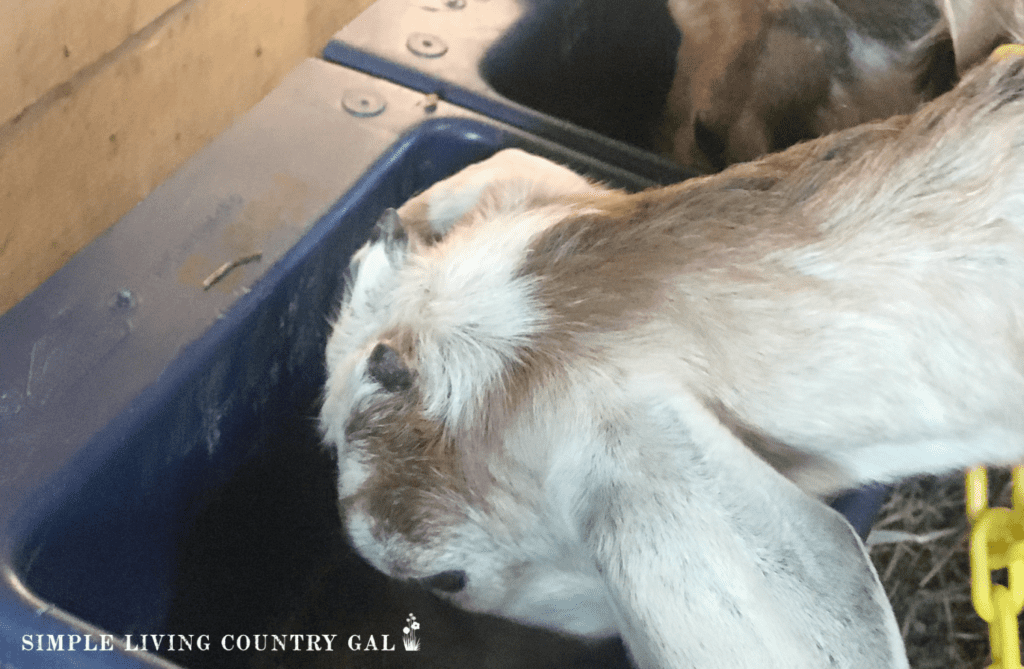
When you catch issues early on you can usually treat them with a minor adjustment in feed or mineral/herbal care.
Waiting for full-blown issues is just asking for trouble. Do your research, ask a ton of questions and call your vet or goat friends for tips and advice.
Nothing will keep your animals healthier than education and preventative care. Remember: It is always a good idea to keep your vet informed of all supplements fed to your animals.
Feeding kelp to your animals on your homestead is a great way to promote their health organically.
Do what you can to promote health not only with your goats but with all of your animals and you will have less illness to deal with on your homestead.
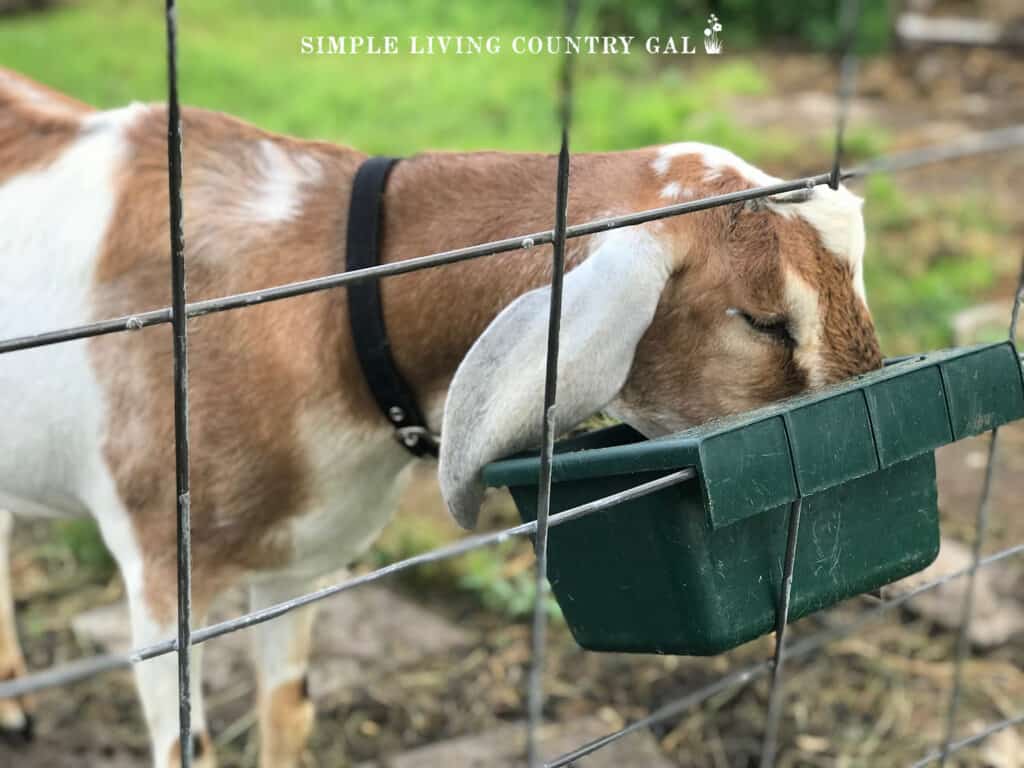
Final thoughts, as with anything new that you incorporate with your livestock go slowly. Try feeding kelp in small amounts for a few days, then stop to see how everyone handles it.
Not all animals will love the taste so do. not worry if only some of your animals routinely eat kelp.
Finally, if you milk your goats, you may want to keep the kelp to a minimum as it does give a “fishy” taste in some goat’s milk, but not all.
I had a goat that completely tainted the taste of her milk, yet her sister’s milk tasted just fine. Test it on your dairy goats so you know!







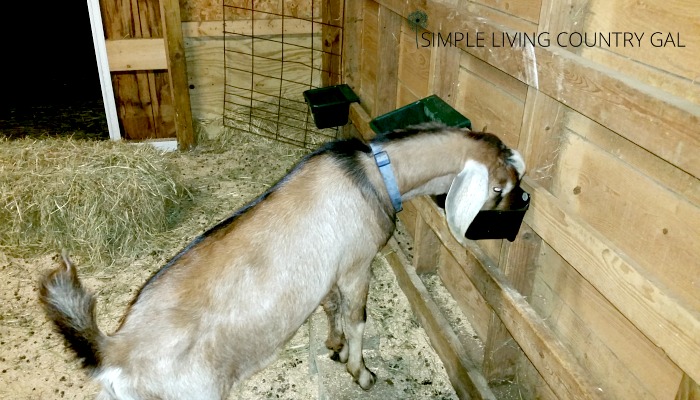







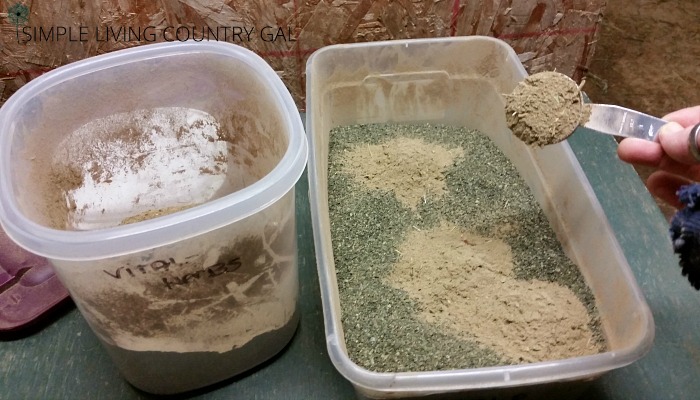
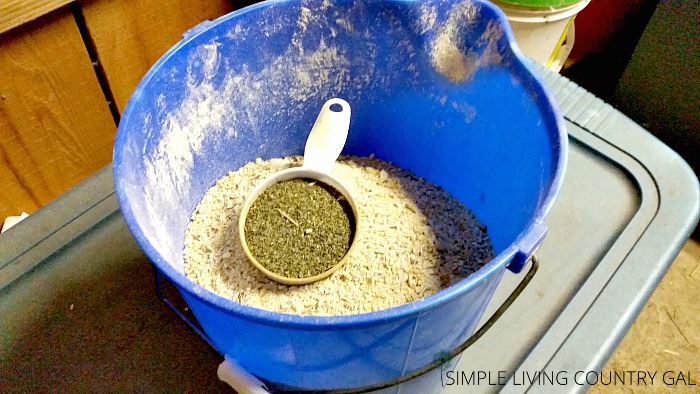
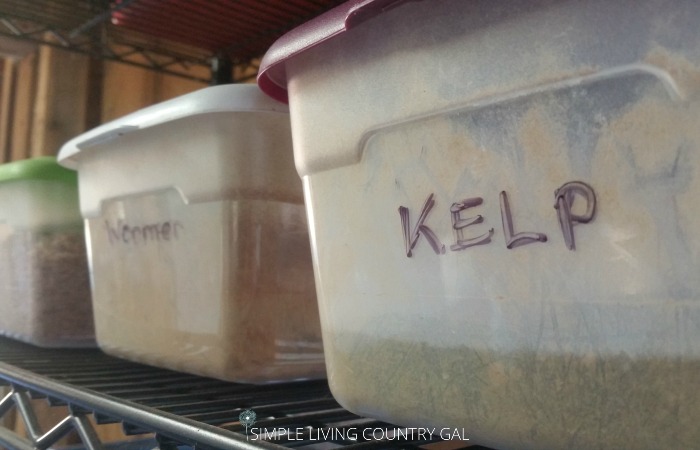
Where do you get those feed bowls that go on the fence?
I got them at our local feed store.